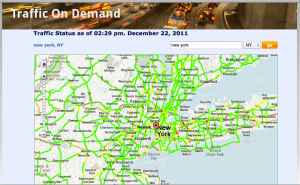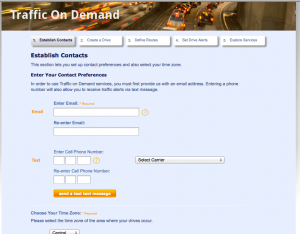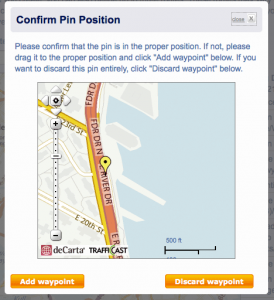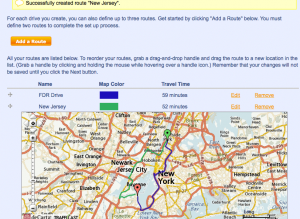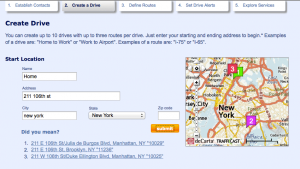We worked with deCarta to provide a clear, real-time map of traffic conditions. The traffic overlay was generated on the server to reduce client-side loading and processing time.
Traffic On Demand (ToD) was a prototype, consumer facing web application built for a Fortune 10 auto company. The product was designed to provide online and in-car traffic information. ToD allowed users to set up common commuting routes and get route recommendations and travel times every day by email, SMS or in-car alert. In addition, the application provided traffic maps and in-car and online incident information.
Technologies used for the ToD project included Drupal 6, deCarta Maps, jQuery, SAML single-sign-on authentication, REST API to link with Nuance in-car voice systems, XML-RPC for communicating with internal legacy Java systems, Omniture analytics. In addition, a universal mapping API was created to evaluate different map vendors with working implementations for deCarta, Bing and Google maps. Custom coded Drupal modules provided all of the content on the site, with special content types for "drives".
Over 1,000 utilized the system with load testing of over 250,000 users completed. In addition, MySQL replication was used with Baracuda load balancers to provide redundancy and fall over in the event of a failure.
Project Features
-
Traffic Map
-
SMS Alerts
The Traffic on Demand system linked with cellular carriers to allow us to send daily alerts on driving conditions to users via SMS.
-
Precision Waypoints
We developed a novel method to choose waypoints on a route. Most routing engines suffer from the possibility of a way point along a route being on the wrong side of the road or slightly off the road and thus generate routes with small turn-arounds or loops. We developed a method to zoom in when a waypoint was placed to allow the user to ensure it was in the proper position.
-
Multiple Routes
The ToD software automatically picked alternate routes for the user, as well as letting them define their own. Having multiple routes per drive allowed the system to tell the user the fastest route to take each day when they turned on their car. Alerts could also be delivered by email and/or SMS message.
-
Address Clarification
If the geocoder could not produce an exact match for the address entered by the user, we would automatically show a lit of possibilities and allow the user to pick the correct address. This ensured we could always give exact travel times and correct routes.
